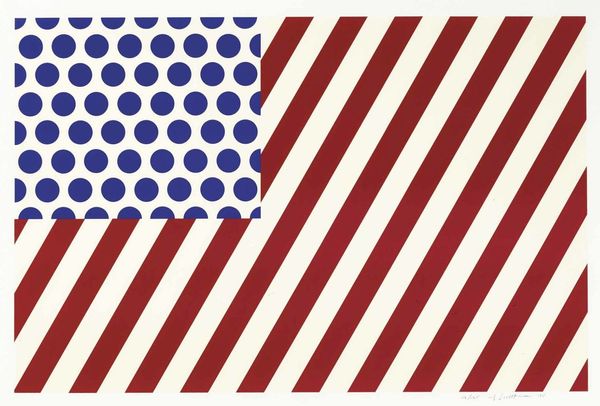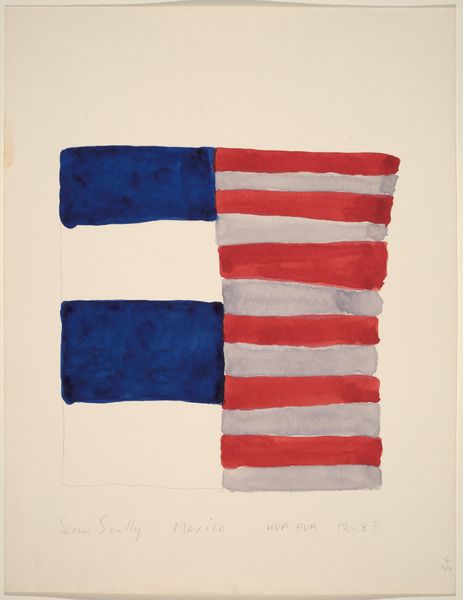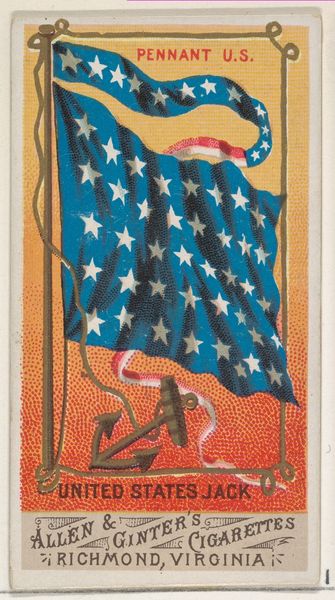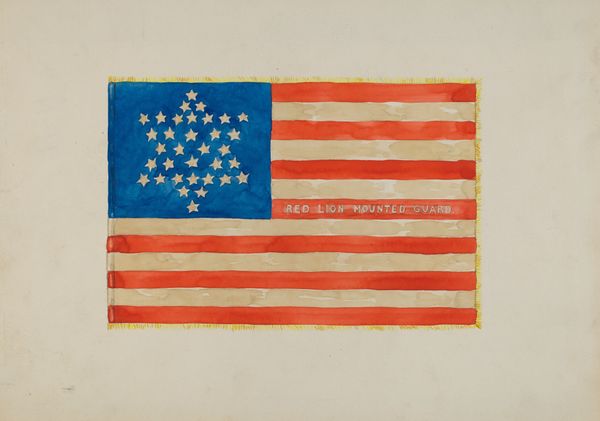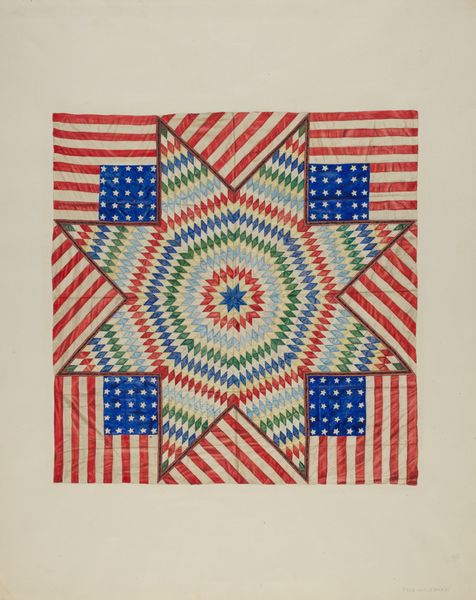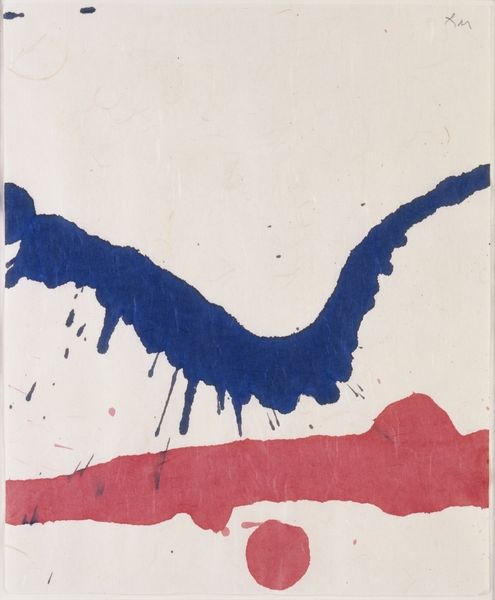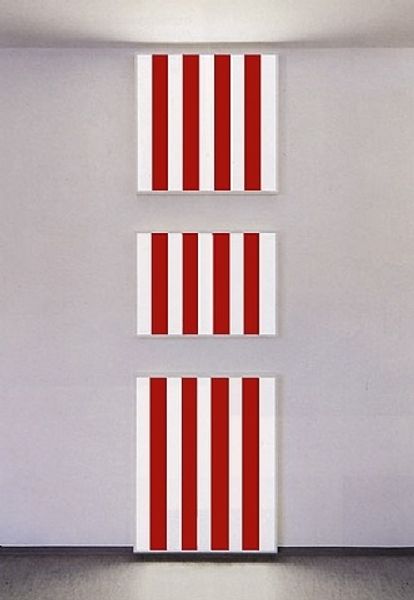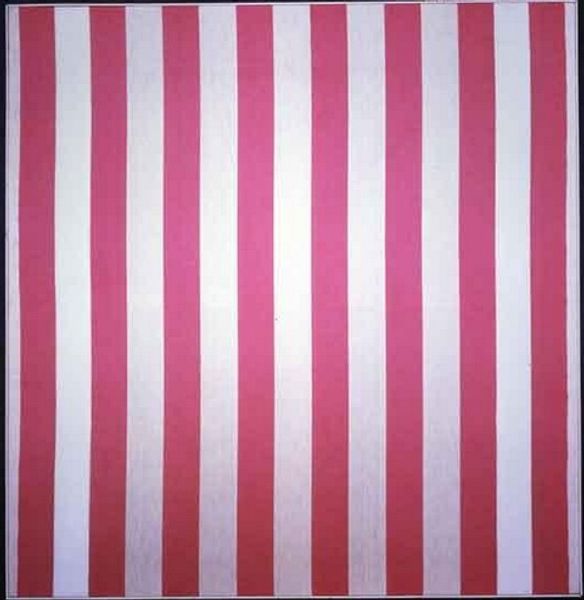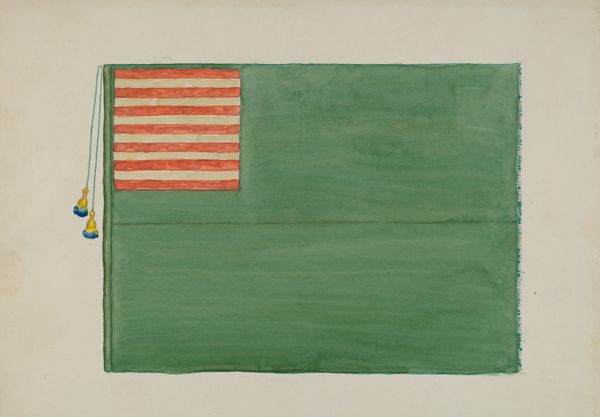
Copyright: Modern Artists: Artvee
Editor: Here we have Roy Lichtenstein's "Illustration for 'Amérique'," created in 1992. It's a print, and at first glance, it looks like a deconstructed American flag. How would you interpret this piece? Curator: Well, immediately I see the layering of symbols and the appropriation of familiar imagery. The American flag, deeply embedded in cultural memory, is here simplified, almost diagrammatic. Lichtenstein uses this iconography to explore the emotional and psychological weight such symbols carry. What feelings does this evoke in you? Editor: Definitely a sense of…detachment, maybe? It’s recognizable, but the slanted stripes and dotted field where the stars should be create a distance. Curator: Exactly. And that distance is key. He's asking us to reconsider the meaning of these symbols. The Ben-Day dots, a signature of his pop art style, also reference the mechanical reproduction of images and how that process impacts our understanding of authenticity. Do you think the title informs how we understand it? Editor: "Amérique"…suggests a European perspective on America, maybe? A commentary on how America is perceived from afar? Curator: Perhaps. Or maybe he’s commenting on the state of cultural production and reproduction in America itself. We’re used to mass production. He makes something unique feel manufactured, but by hand. The act of appropriation suggests Lichtenstein wasn’t interested in deconstructing the flag, but perhaps he deconstructed our interpretation of the symbol of the flag. Editor: That's fascinating. I hadn’t considered it that way. It’s much more layered than I initially thought. Curator: Yes, Lichtenstein’s art invites us to reflect on how we assign value and meaning to the symbols that surround us and how visual memory gets stored and reactivated within us as viewers.
Comments
No comments
Be the first to comment and join the conversation on the ultimate creative platform.
